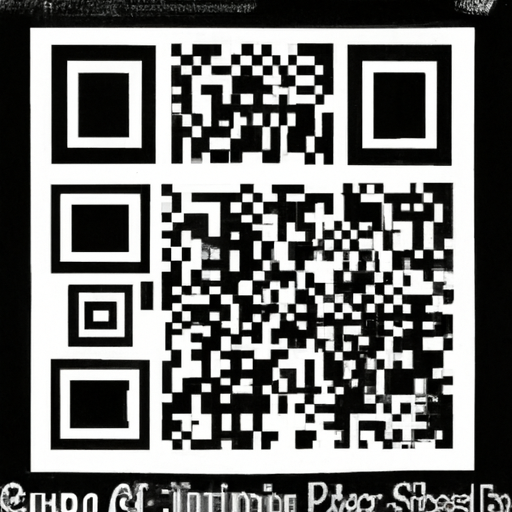Are you ready to enhance your Windows command prompt skills? NetworkChuck has got you covered with his video titled “30 Windows Commands you CAN’T live without.” In this video, he introduces an additional 35 command prompt commands that every user should know. From launching the command prompt in “beast mode” to hiding files and folders, encrypting files, and displaying WiFi network information and passwords, NetworkChuck covers it all. He also demonstrates how to save and run commands from a batch file, customize the command prompt appearance, and use Curl for a variety of functions like checking the weather and creating QR codes. Don’t miss out on the opportunity to level up your Windows command prompt game!
But wait, there’s more! NetworkChuck doesn’t stop at just 30 commands. He goes above and beyond to showcase an additional 35 commands that you need to know. From hiding your secrets, encrypting files, and manipulating folders to revealing WiFi passwords, copying files securely, and even mapping folders as virtual drives, NetworkChuck covers a plethora of useful Windows command prompt tips and tricks. Not only will you learn how to navigate the command prompt like a pro, but you’ll also discover the power of Curl for tasks like checking the weather, shortening links, and checking website statuses. Get ready to take your command prompt skills to the next level with NetworkChuck’s informative and engaging video.
Introduction
In this article, we will explore 35 additional Windows Command Prompt commands that every user should know. These commands will enhance your experience with the command prompt and allow you to perform a variety of tasks more efficiently. From launching the command prompt in “beast mode” to customizing its appearance and using Curl for various functions, we will cover a wide range of command prompt features and capabilities. So, let’s dive in and discover the commands that you can’t live without!
Launching Command Prompt
Setting Command Prompt to Run as Administrator
To launch the command prompt as an administrator by default, follow these simple steps. Begin by opening the command prompt shortcut. Right-click on the shortcut and select “Properties.” In the Properties window, click on the “Advanced” button. Then, check the box that says “Run as administrator” and click “OK.” Finally, click “Apply” and “OK” to save the changes. Now, every time you open the command prompt, it will automatically run as administrator, giving you access to elevated privileges.
Launching Command Prompt in Beast Mode
If you want to launch the command prompt in “beast mode” every time, there’s a simple trick you can use. Instead of clicking on “Run as administrator” every time, you can modify the command prompt shortcut to always run as administrator. To do this, follow these steps. Open the command prompt shortcut and right-click on it. Select “Properties” and go to the “Advanced” tab. Check the box that says “Run as administrator,” then click “OK,” “Apply,” and “OK” to save the changes. Now, whenever you open the command prompt, it will launch in “beast mode” automatically.
File and Folder Operations
Hiding Files and Folders
If you have files or folders that you want to hide from prying eyes, the command prompt can help you achieve that. By using the “copy” command, you can hide your sensitive files or folders inside innocuous-looking ones. Let’s say you want to hide a folder called “secrets” inside an image called “kitten.jpg.” You can use the following command:
copy /b kitten.jpg + secrets secretphoto.jpg This command will create a new file called “secretphoto.jpg” that appears to be a regular image of a kitten, but it actually contains your hidden files or folders. To access the hidden files or folders, simply open the “secretphoto.jpg” file with appropriate software, such as an image viewer or an archive tool that supports JPEG files.
Encrypting Files
To protect the confidentiality of your files, you can use the command prompt to encrypt them. By encrypting your files, you ensure that only authorized users can access and view their contents. The command prompt offers a powerful encryption tool called Cipher. To encrypt a folder and all its files, use the following command:
cipher /e foldername Replace “foldername” with the name of the folder you want to encrypt. This command will encrypt all the files within the specified folder, making them inaccessible to unauthorized users. It is important to remember the encryption password or key because without it, you will not be able to decrypt the files and access their contents.
Network and Wi-Fi Commands
Showing Wi-Fi Network Information
If you want to view information about the Wi-Fi networks you have connected to in the past, the command prompt can provide you with that information. By using the “netsh wlan show profile” command, you can see a list of all the Wi-Fi networks you have connected to. Enter the following command:
netsh wlan show profile This command will display a list of all the Wi-Fi profiles, including the names of the networks you have connected to. You can use this information to identify the networks you have previously used.
Displaying Wi-Fi Passwords
The command prompt also allows you to view the passwords of the Wi-Fi networks you have connected to. By using the “netsh wlan show profile” command with additional parameters, you can reveal the Wi-Fi passwords in plain text. Let’s say you want to view the password for a network named “butterfly.” Enter the following command:
netsh wlan show profile name="butterfly" key=clear This command will display detailed information about the specified network, including the Wi-Fi password in plain text. Be cautious when using this command, as it reveals sensitive information. Only use it on your own devices and networks, and avoid using it on public or unfamiliar networks.
Batch Files
Saving Commands in a Batch File
If you frequently use a set of commands in the command prompt, it can be tedious to type them out every time. To save time and automate repetitive tasks, you can create a batch file that contains all the commands you need. To create a batch file, open Notepad and enter your commands, one per line. Save the file with a .bat extension, such as “filename.bat.” Now, whenever you want to run those commands, simply double-click the batch file, and they will be executed sequentially.
Running Commands from a Batch File
Once you have created a batch file, running the commands inside it is simple. The batch file acts as a script that executes the commands sequentially. To run a batch file, simply double-click on it, and the command prompt will open, displaying the output of each command as it is executed. This allows for efficient automation of tasks and saves you time and effort.
Customizing Command Prompt
Customizing Command Prompt Appearance
The command prompt’s default appearance can be customized to suit your preferences. You can change the colors, modify the prompt text, and even set a custom window title. To modify the colors, you can use the “color” command, followed by two digits representing the background and text colors. For example, to set the command prompt text to green on a black background, enter:
color 2 To customize the prompt text, use the “prompt” command followed by the desired prompt format. For example, to display “[Hey Beautiful]” as the prompt, enter:
prompt [Hey Beautiful]$ To set a custom window title, use the “title” command followed by the desired title. For example, to set the window title to “Home Sweet Home,” enter:
title Home Sweet Home These customization options allow you to personalize your command prompt and make it more visually appealing and user-friendly.
Using Curl
Checking the Weather
Curl is a powerful command-line tool that provides functionality for making requests to various internet services and APIs. With Curl, you can perform a wide range of tasks, including checking the weather directly from the command prompt. To check the weather using Curl, enter the following command:
curl wttr.in/ Replace “
Shortening Links
Another useful feature of Curl is the ability to shorten URLs. This can be helpful when you have long or complex URLs that you want to share or use more efficiently. To shorten a link using Curl, use the following syntax:
curl -s https://example.com/api/shorten?url= Replace “
Creating QR Codes
Curl can also generate QR codes, which are matrix barcodes that can be scanned by smartphones or other devices with a QR code reader. To create a QR code using Curl, use the following syntax:
curl qrenco.de/ Replace “
These powerful features of Curl expand the capabilities of the command prompt and enable you to perform a variety of tasks conveniently from the command line.
Additional Training Resources
ITPro by ACI Learning
If you’re interested in further expanding your skills and knowledge in IT, ITPro by ACI Learning is a valuable resource. They offer comprehensive training programs that cover a wide range of IT topics, from networking to cybersecurity. Whether you’re just starting or looking to advance your career, ITPro provides the resources and expertise you need to succeed. Visit their website to explore their training options and take your IT skills to the next level.
Defining Words
Using Curl to Define a Word
In addition to its other capabilities, Curl can also be used to define words directly from the command prompt. By making a request to a word definition API, you can retrieve the meaning of a word without leaving your command line interface. To define a word using Curl, enter the following command:
curl dict.org/d/ Replace “
Conclusion
In this article, we have explored 35 additional Windows Command Prompt commands that can enhance your experience and productivity. From launching the command prompt in “beast mode” to customizing its appearance, hiding files and folders, encrypting files, and utilizing Curl for various functions, these commands provide you with valuable tools and capabilities. By mastering these commands, you can navigate the command prompt more efficiently and streamline your workflow. Remember to always exercise caution when using command prompt commands and ensure that you have the necessary permissions to perform certain actions. With practice and exploration, you will become a proficient user of the command prompt, empowering yourself to accomplish tasks with ease.













